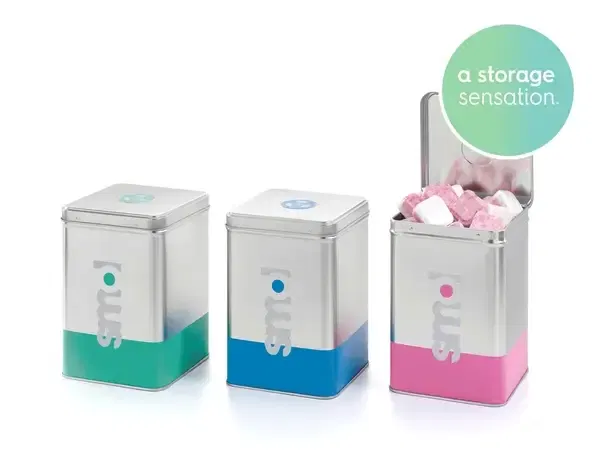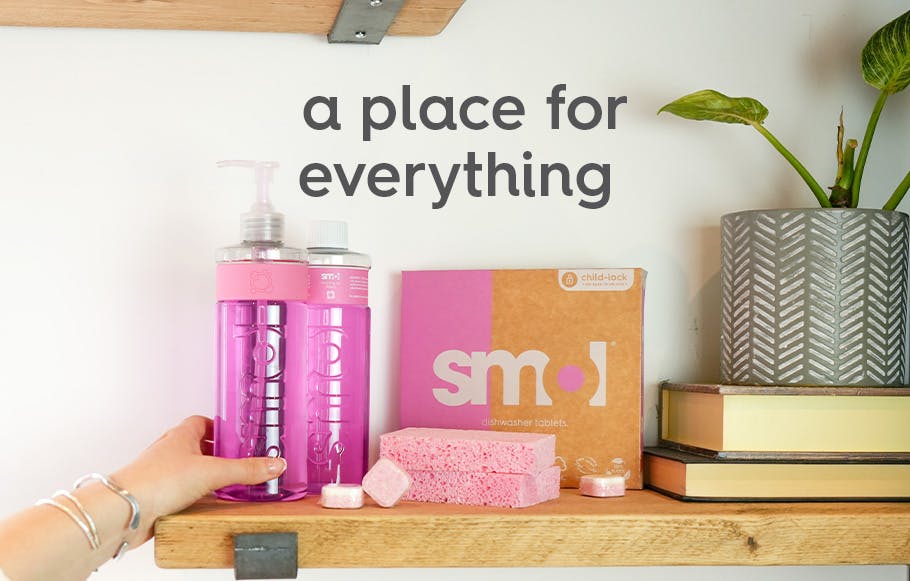23 Dec 2024
What’s your cleaning cupboard like?
Option 1: Clutter-free zen retreat
Option 2: Messy cat's cradle of crammed-in tangled tat
If you selected option 2 you may find that cleaning chaos in the cupboard is actually hindering your ability to get the household chores done. It might also mean that forgotten cleaning supplies get purchased again unnecessarily, which of course is a waste of money.
So if you think your cleaning products could do with a good declutter alongside some savvy space-saving storage solutions… then you’re in the right place.
cleaning cupboard cull.
But before you begin to sort, it’s good to start with a cull.
According to Marie Kondo’s 6 basic rules of tidying, we must ask ourselves if an item “sparks joy” to help decide if it’s a keeper… this may be a stretch for some of us when it comes to cleaning products (smol being the exception) so let’s stick to these basic rules instead.
- Do you need every cleaning spray bottle you own?
- Combine any part-used bottles of the same brand and product.
- Ditch duplicate mops, brooms, vacuums, and dusters.
- If you haven’t used an item in over a year… you don’t need it.
- Pop all empty plastic bottles in the recycling.
storage safety…
And remember these 3 golden rules when it comes to cleaning product storage:
- Use a cool, dry place. Moisture or heat can have negative impacts.
- If your storage area has ventilation that’s a bonus as it will prevent a build-up of fumes.
- NEVER mix different cleaning brands or products. You could create toxic chemicals.
- Bleach + vinegar = chlorine gas (damaging to lungs).
- Bleach + ammonia = chloramine (harmful to skin, eyes and lungs).
- Hydrogen peroxide + vinegar = peracetic acid (caustic for skin).
- Bleach + ammonia = phosgene gas (irritates skin, eyes, throat and lungs).
where to store cleaning products.
1. under the kitchen sink.
It’s easy to access, and usually central to the home. With good sink access it’s the place where you can make up most cleaning supplies.
2. the bathroom cupboard.
All items that you use to clean your bathroom may as well be kept in that same room if you have the space. Just make sure to keep them out of reach of children, pets and vulnerable adults.
3. a utility/laundry room or garage.
This is a great option if you have one! Just make sure that if you’re storing items in a garage the temperature doesn’t fall too low in Winter.
4. the under stairs cupboard.
This is usually centrally positioned in the home so can be a good place to store your cleaning products. The risk here is that you pile larger items in front of your cleaning supplies making them harder to access.
N.B. WHEREVER you store your items, if you have pets, children or vulnerable adults in your home (or that visit your home) you should keep your cleaning products somewhere that can be locked. Cupboard and drawer child safety locks are great for this and should prevent kids and pets reaching into places they shouldn’t!
how to store cleaning products.
1. baskets.
Boxes or baskets of items can fit neatly next to each other for maximum storage efficiency. You can even label each basket according to the room it will clean. Basketing your cleaning products is the easiest way to stay tidy. And when you need to clean the cupboard they live in… just lift out the baskets - so much easier than lots of individual loose items.
2. caddies & containers.
Don’t forget smaller stackable tins for tablets or capsules. smol caddies will hold your laundry capsules and dishwasher tablets with not a whiff of plastic in sight because they are made from sturdy metal. They are a great option for keeping your smol easily accessible but remember to keep them out of reach of children, pets or vulnerable adults as they are not child-impeding.
If humidity and moisture is an issue and you are storing powders (like bicarbonate of soda) or tablets that should not be exposed to damp then airtight containers will protect against water. Make sure you label any containers.
3. string up bottles.
If space is limited - add a thin tension rod underneath your kitchen sink. The spray handle on your bottles (such as smol’s multi purpose surface spray) can hang over the rod and sit above the cupboard base. Choosing products such as smol multi purpose also cuts down on the number of bottles you need; much better to have one product that cleans multiple areas in the home than different bottles for each job.
4. spinning storage.
Ever used a turntable at a restaurant or in the home for serving food? They can be super useful and not just for mealtime - some people swear by them for storing cleaning products in deep cupboards.
5. colour coding.
It’s best to keep different cloths for different cleaning jobs and colour coding will help you with that. smol cloths come as a multi-coloured pack so this makes remembering which is used for each job super simple. The fact that they are made from plants and biodegrade is an added bonus on top of their super absorbency. They’re a definite must for any cleaning cupboard.

where to store cleaning tools.
And what about your cleaning tools?
We’re talking mops, brushes, vacuums etc. They tend to take up a great deal more space than the cleaning products we use but the good news is they shouldn’t be impacted by temperature or moisture. Great places to store them include:
1. full height kitchen cupboard or pantry.
If your kitchen has the space for a full height cupboard or pantry then it’s a great option for cleaning tools. It keeps them super accessible in the place where you’ll do the most cleaning.
2. under the stairs.
This is a central area of the home and one where you usually have the height required.
3. airing cupboard.
It’s got the head height you’ll need, but just make sure your cleaning tools don’t come into contact with any clean linen if they are dirty from use. Airing cupboards can also contain hot pipes so make sure any plastic items are not resting up against them.
how to store cleaning tools.
1. hanging hooks.
Mops, long dusters and brooms can be hung against the inside of a tall cupboard door with hooks or spring-activated clamps.
2. baskets.
Sort out any smaller brushes, dustpan, dusters, sponges and mop heads into a basket so they can be kept in order rather than lots of loose items scattered about.
3. wall mounting.
Some cordless vacuums can be wall mounted but you may not want them taking up space on your living area walls. Mounting them under the stairs or inside a tall cupboard/pantry could be the option and remember, the battery is removable so it’s not a problem if your under stairs area has no socket. Simply take the battery elsewhere to charge.
savvy storage basics.
So, what are our key storage take-aways for cleaning storage that brings us joy ;) ?
- Group items into containers of some sort to prevent clutter.
- Never mix cleaning products that can cause dangerous reactions.
- Keep cleaning products away from children, vulnerable adults and pets.
- Avoid using multiple products when one will do (like smol multi purpose spray).
- Make sure your storage area is cool & dry with ventilation if possible.
Save space and join the refill revolution with our
